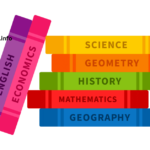Introduction
Education is the cornerstone of societal progress, shaping the minds that will lead our future. But what makes an education system truly exceptional? This article delves into the characteristics of some of the world’s most highly regarded education systems, examining their unique approaches and the lessons we can learn from them.
Finland: A Model of Trust and Equity
Finland consistently ranks among the top education systems globally, and for good reason.
Key Features:
- Emphasis on equality and inclusivity
- High level of trust in teachers
- Focus on holistic development rather than standardized testing
Finnish education prioritizes student well-being alongside academic achievement. Teachers are highly respected professionals with significant autonomy in their classrooms.
“In Finland, we prepare children to learn how to learn, not how to take a test.” – Pasi Sahlberg, Finnish educator and scholar
The Play-Based Approach
Finnish schools incorporate play-based learning, especially in early childhood education. This approach fosters creativity, social skills, and a love for learning from a young age.
Singapore: Excellence Through Rigorous Standards
Singapore’s education system is renowned for producing top performers in international assessments.
Pillars of Success:
- Strong emphasis on mathematics and science
- Rigorous teacher training and selection process
- Regular curriculum reviews to stay relevant
The Singaporean approach combines high academic standards with practical application of knowledge.
The Thinking Schools, Learning Nation Initiative
Launched in 1997, this initiative aims to develop creative thinking skills and a passion for lifelong learning among students.
Canada: Embracing Diversity and Inclusivity
Canada’s education system stands out for its ability to cater to a diverse student population while maintaining high standards.
Notable Aspects:
- Robust support for immigrant students
- Strong focus on literacy across all subjects
- Emphasis on critical thinking and problem-solving skills
Canadian schools excel in creating inclusive learning environments that celebrate cultural diversity.
“Education is what remains after one has forgotten what one has learned in school.” – Albert Einstein
This quote resonates with Canada’s approach to fostering lifelong learning skills.
Estonia: Pioneering Digital Education
Estonia has emerged as a leader in integrating technology into education.
Digital Innovation:
- Coding taught from primary school
- Widespread use of e-learning platforms
- Focus on digital literacy and cybersecurity
Estonia’s education system prepares students for the digital age, equipping them with skills crucial for the 21st-century workforce.
The Tiger Leap Program
This initiative, launched in 1997, laid the foundation for Estonia’s digital education success by introducing computers and internet access to all schools.
Japan: Balancing Tradition and Innovation
Japan’s education system is known for its high academic achievements and strong work ethic.
Key Elements:
- Emphasis on moral education and character development
- Strong focus on collaborative learning
- Integration of traditional values with modern educational practices
Japanese schools prioritize not just academic knowledge but also the development of well-rounded individuals.
The Importance of Extracurricular Activities
Japanese schools place significant emphasis on clubs and after-school activities, which are seen as crucial for personal development and social skills.
Conclusion
While each of these education systems has its unique strengths, they all share common threads: a commitment to equity, a focus on teacher quality, and an emphasis on developing well-rounded individuals. As we look to improve education globally, these successful models offer valuable insights and inspiration.
The best education system isn’t about copying one country’s approach wholesale, but rather understanding the principles behind their success and adapting them to local contexts. By learning from these exemplary systems, we can work towards creating more effective, inclusive, and forward-thinking education for all.





